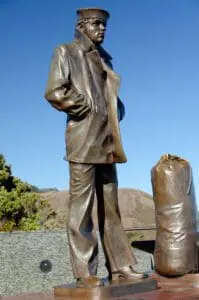
I recently saw Across the Spider-Verse, the sequel to Into the Spider-Verse, which was one of my favorite movies — and certainly my favorite animated movie — of at least the last decade. I really enjoyed Across — I highly recommend it — but I left the theater feeling that, somehow, it didn’t grab me as hard as its predecessor did.
That’s not surprising — the common wisdom is that sequels rarely have as “powerful” an impact as originals. One of the few exceptions that comes to mind is The Empire Strikes Back, which, as much as I loved Star Wars (aka A New Hope) — heck, I saw Star Wars 17 times in the theaters before I lost track — I felt was at least as powerful as the original.
But the real question is why are sequels rarely as powerful as the original? Since it’s commonly accepted wisdom that they’re not — and given that filmmakers generally want to create powerful films, in part because they have bigger box office takes — it should be a solved problem. After all, there’s nothing quite as motivating, particularly in Hollywood, as the desire to maximize profits :).
The traditional answer is writers have so little power over the story/plot that they are forced to accede to the demands from studios to “give me more of the same”. I agree that’s a big factor, but it can’t be the sole reason. Case in point: I didn’t see Empire 17+ times in the theaters, and I definitely would have if it had grabbed me as strongly. Which would’ve made all the profit-seeking companies involved more money.
So we need to expand the “if only writers were in charge” theory and look elsewhere.
In talking over Across versus Into with my wife we had an interesting insight: we found the most engaging/powerful parts of Across to be those scenes where new human elements were being added to the story. The new backstory on Gwen/Spider-Woman. The new Indian Spider-Man, and the community in which he lived.
Those scenes, and others, added to the story in our mind, often in powerful ways. The “been there, done that” fight scenes, while visually stunning and attention-grabbing, didn’t do that…because we’d “seen them all before” (not to mention it’s hard to establish an emotional connection with a character you only see for seconds and whom you never see again).
That’s so obvious a potential deficiency in a sequel that it’s impossible to imagine every creative person on the planet isn’t aware of it. So why don’t they include more character development, and introduce more characters, in sequels?
I think there are two reasons (one of which plays into the “mindless upper management” input writers and directors arguably have to deal with).
First, an original is, by definition, totally new. Sure, there’s a lot of truth in the old adage “First there was Homer, after which everything else was derivative”. But even when there are resonances with earlier characters, a new character is a new character. The writers have to focus on the character, so we’ll know who they are. Moreover, since the audience, by definition, doesn’t know the character we can’t be sure how they’re going to react. Which, given good storytelling, means we are immediately primed to be grabbed in a way that’s harder to replicate when the character appears in a sequel.
Unless you expand that character’s backstory, revealing previously unknown elements. Ideally ones which defy or upset our understanding of who the character “really” is. With Empire, at least for me and I suspect many others, a pivotal example of that came when Darth Vader said “Luke, I am your father”. Luke, and the audience, were instantly catapulted into a world where we, and he, had to ask “How is that possible? What does it all mean? What does it presage about where Luke’s story is going?” Exposing and expanding Gwen’s backstory in Across did something similar, albeit in a less dramatic way.
Another way to create the same “grabbing force” in a sequel is to introduce important new characters which allow the storyteller to expand the universe in which the story is being told. Lando Calrissian in Empire is an example of this. So was the Indian Spider-Man in Across.
Given how simple (and obvious) this “fix” is, why isn’t it automatically used in every sequel ever created?
Certainly “mindless management” is one factor. When you stumble on a formula for success, it’s natural to say “just give me more of the same”. But as I mentioned earlier, the downsides of doing that are also so obvious it’s hard to imagine management being that mindless. If nothing else, they want more grabbiness to sell more tickets, and support even more sequels.
The audience is the additional critical factor here, I think. While audiences love to be grabbed, once they’ve been grabbed, they also love to continue their relationship with what grabbed them in the first place. That’s an imposing “conservative” force — as in “give me more of what I already have and like” — which doesn’t exist in an original.
So, when it comes to the almost inevitable weakness of sequels, we’ve once again stumbled onto Walt Kelly’s famous observation: “We have met the enemy, and he is us.”
One final (for now) observation: that “conservative force” is, I suspect, hardwired into human psychology. It’s admittedly valuable in many situations, particularly as an initial response (“when faced with something bad happening, try hard not to make it worse”).
But, as the poor sequels conundrum demonstrates, it also imposes a significant cost. Put another way, while it may be a reasonable first response, it is rarely an optimal “final” response. Because it cuts you off from possibilities you might otherwise enjoy and benefit from. It may prevent or delay bad things from happening…but as someone once observed about life in general, “Sure, the game is rigged. But if you don’t play you can’t win. Dive in!”














































